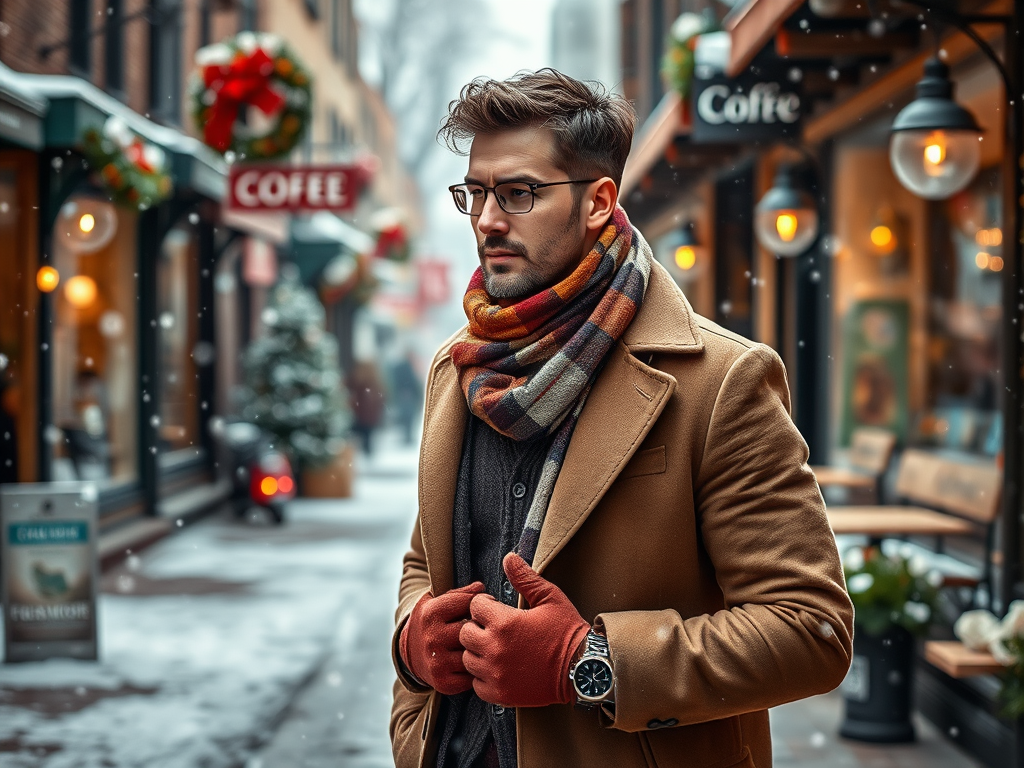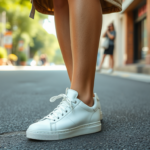
Winter fashion for men is often about more than just keeping warm; it’s also about making a statement. Layering is an art form, allowing you to blend comfort, utility, and style all in one outfit. The trick lies in mastering the balance between looking sharp and staying cozy. Whether braving the chill on a commute or strolling through a winter wonderland, the perfect layered look can make all the difference. In this article, we’ll explore how to assemble your winter wardrobe using layering techniques that suit various occasions and personal styles. Get ready to embrace the cold without sacrificing your fashion sense!
Layering in winter involves strategically combining different clothing items to create a cohesive look that provides both warmth and versatility. It isn’t just about piling on clothes; it’s about understanding how to blend different fabrics, colors, and styles. A well-layered outfit transitions smoothly from freezing outdoors to warm indoor spaces, allowing you to peel off layers as needed. From the base to the outermost layer, each piece plays an essential role. Let’s take a deeper look at how to build your perfect winter outfit layer by layer.
Understanding the Basics of Layering

At the core of effective layering are three primary layers: the base, mid, and outer. Each layer serves a specific purpose, contributing to overall comfort and style. The base layer, worn closest to the skin, is crucial for moisture management, keeping you dry during winter activities. The mid layer provides insulation, trapping warmth, while the outer layer protects against all elements — wind, rain, or snow. Together, these layers create not only functional outfits but also opportunities for aesthetic expression. Now, let’s dive into the specifics of each layer.
Choosing the Right Base Layer

The base layer is your first line of defense against the cold. It’s essential to choose materials that are both moisture-wicking and insulating. Merino wool stands out as a popular option, known for its breathability and warmth. Alternatively, polyester blends are great for those seeking a lightweight solution. Investing in this layer is critical, as it can significantly enhance your comfort throughout the day. Here are key factors to consider when selecting your base layer:
- Moisture-wicking capabilities
- Insulation properties
- Comfort and fit
Understanding fit is crucial in the base layer selection process. A snug yet comfortable fit helps retain heat while allowing for movement. Be mindful of how different fabrics feel against your skin; rough materials can lead to discomfort over time. Aim for fabrics that are soft and don’t irritate your skin. Layering becomes much easier when you choose the right fit and feel from the outset.
Selecting the Perfect Mid Layer
Next up, we have the mid layer, which is essential for adding warmth between your base and outer layers. This layer can take many forms, from sweaters to fleeces, and even vests. The purpose of the mid layer is to provide insulation while allowing for breathability so that you don’t overheat. When picking your mid layer, consider options that maintain warmth without adding excess bulk. Here’s a quick overview of popular mid-layer styles:
- Knitted sweaters
- Fleece jackets
- Puffy vests
| Mid Layer Type | Pros | Cons |
|---|---|---|
| Knitted Sweaters | Stylish and warm | Can be bulky |
| Fleece Jackets | Lightweight and breathable | Less windproof |
| Puffy Vests | Good insulation without bulk | Limited arm coverage |
When selecting a mid layer, also pay attention to texture and colors. A well-choosen mid layer can bring depth to your outfit and make the overall look more appealing. Consider pairing a neutral-colored sweater with a vibrant outer layer to create a striking contrast. Mixing textures, like a soft fleece with a sleek outer coat, adds dimensionality to your look.
Picking an Effective Outer Layer
The final piece of your layered look is the outer layer, which acts as the protective shield from the winter elements. Functions to look for in this layer include waterproofing, wind resistance, and breathability. Popular types of outer layers are coats, parkas, and heavier overcoats, each providing different levels of warmth and protection. Ensure your outer layer complements your inner layers; this will create a polished and intentional appearance. To help you choose the right outer layer, consider these key criteria:
- Weather resistance
- Cut and style
- Pockets and hoods for convenience
Additional features like hoods and pockets can greatly increase the functionality of your outer layer. A hood can add warmth to your head on extremely cold days, while spacious pockets are useful for storing essentials. Understanding these features can allow you to choose an outer layer that fulfills your specific needs, whether for a casual day out or a formal winter event.
Accessorizing Your Winter Look
Accessories are the cherry on top of your winter outfit, providing both warmth and style. Scarves, gloves, hats, and boots are not only functional but can also serve as key style elements that elevate your entire look. Invest in a few quality accessories that can mix and match well, allowing for versatility throughout the winter season. Here are some essential accessories to consider:
- Thermal gloves for warmth
- Cozy scarves in various colors
- Stylish hats, whether beanies or fedoras
- Insulated boots that offer both function and fashion
When it comes to accessorizing, color coordination is vital for achieving a cohesive look. Opt for accessories that complement or contrast with your layered outfit. A bold scarf can add a pop of color, while neutral gloves and hats can tie the look together seamlessly. Don’t hesitate to experiment with different combinations; you’ll likely find a signature style that feels uniquely yours.
Layering Pro Tips
As you embark on your layering journey, keep in mind these practical pro tips for success. First, aim to combine lightweight layers to avoid bulkiness. This allows for easier movement and adaptability; you’re more likely to feel comfortable throughout the daily activities of winter. Additionally, think about transitioning easily between indoor and outdoor settings. Here are some tips for layering effectively:
- Choose fitted layers for better heat retention.
- Experiment with different lengths in your outer layer.
- Consider removable layers for versatility throughout the day.
Conclusion
Layering is more than a functional approach to winter dressing; it’s a way to express your personal style while staying warm. Each layer plays a vital role, from moisture management with the base layer to the aesthetic touch of your accessories. By experimenting with different combinations and focusing on fit and texture, you can create the perfect layered outfit tailored to your taste. So, embrace this winter season with confidence and creativity, crafting looks that are as unique as you are.
Frequently Asked Questions
- What are the best materials for winter base layers? Merino wool, polyester, and thermal blends are ideal for moisture-wicking and insulation.
- How do I prevent bulkiness when layering? Choose fitted base and mid-layers, and opt for lightweight materials.
- Can I wear a coat over a hoodie? Yes, a fitted coat can comfortably layer over a hoodie for added warmth.
- What are some must-have winter accessories? Essential accessories include thermal gloves, cozy scarves, stylish hats, and insulated boots.
- How can I make my winter outfit more stylish? Play with colors, textures, and patterns, and incorporate fashionable accessories.




